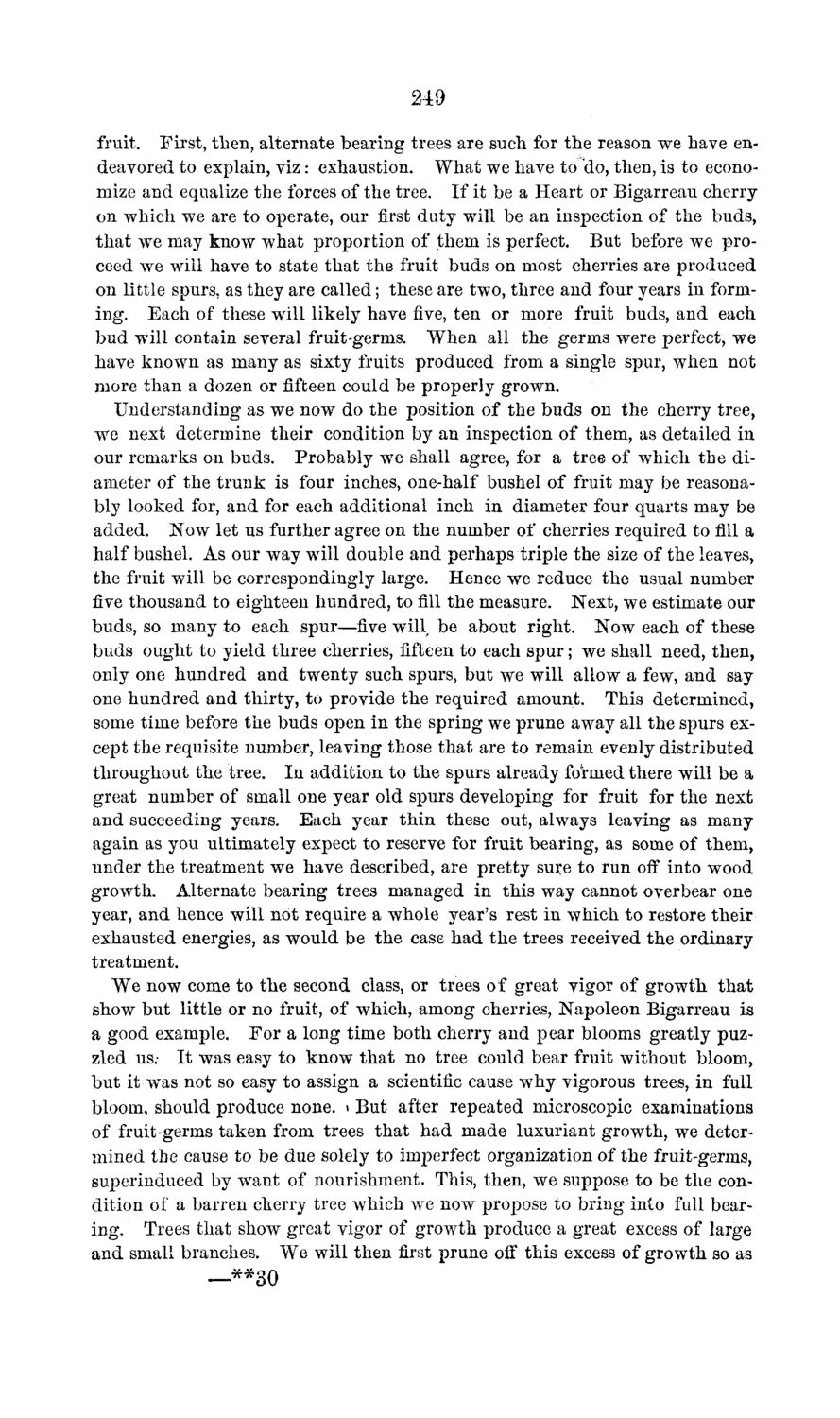| |
| |
Caption: Board of Trustees Minutes - 1869
This is a reduced-resolution page image for fast online browsing.

EXTRACTED TEXT FROM PAGE:
249 fruit. First, then, alternate bearing trees are such for the reason we have endeavored to explain, viz: exhaustion. What we have to do, then, is to economize and equalize the forces of the tree. If it be a Heart or Bigarreau cherry on which we are to operate, our first duty will be an inspection of the buds, t h a t we may know what proportion of them is perfect. But before we proceed we will have to state that the fruit buds on most cherries are produced on little spurs, as they are called; these are two, three and four years in forming. Each of these will likely have five, ten or more fruit buds, and each bud will contain several fruit-germs. When all the germs were perfect, we have known as many as sixty fruits produced from a single spur, when not more than a dozen or fifteen could be properly grown. Understanding as we now do the position of the buds on the cherry tree, we next determine their condition by an inspection of them, as detailed in our remarks on buds. Probably we shall agree, for a tree of which the diameter of the t r u n k is four inches, one-half bushel of fruit may be reasonably looked for, and for each additional inch in diameter four quarts may be added. Now let us further agree on the number of cherries required to fill a half bushel. As our way will double and perhaps triple the size of the leaves, the fruit will be correspondingly large. Hence we reduce the usual number five thousand to eighteen hundred, to fill the measure. Next, we estimate our buds, so many to each spur—five will be about right. Now each of these buds ought to yield three cherries, fifteen to each spur; we shall need, then, only one hundred and twenty such spurs, but we will allow a few, and say one hundred and thirty, to provide the required amount. This determined, some time before the buds open in the spring we prune away all the spurs except the requisite number, leaving those that are to remain evenly distributed throughout the tree. I n addition to the spurs already formed there will be a great number of small one year old spurs developing for fruit for the next and succeeding years. Each year thin these out, always leaving as many again as you ultimately expect to reserve for fruit bearing, as some of them, under the treatment we have described, are pretty sure to run off into wood growth. Alternate bearing trees managed in this way cannot overbear one year, and hence will not require a whole year's rest in which to restore their exhausted energies, as would be the case had the trees received the ordinary treatment. We now come to the second class, or trees of great vigor of growth t h a t show but little or no fruit, of which, among cherries, Napoleon Bigarreau is a good example. F o r a long time both cherry and pear blooms greatly puzzled us: It was easy to know that no tree could bear fruit without bloom, but it was not so easy to assign a scientific cause why vigorous trees, in full bloom, should produce none. < But after repeated microscopic examinations of fruit-germs taken from trees that had made luxuriant growth, we determined the cause to be due solely to imperfect organization of the fruit-germs, superinduced by want of nourishment. This, then, we suppose to be the condition of a barren cherry tree which we now propose to bring into full bearing. Trees that show great vigor of growth produce a great excess of large and small branches. We will then first prune off this excess of growth so as _**30
| |